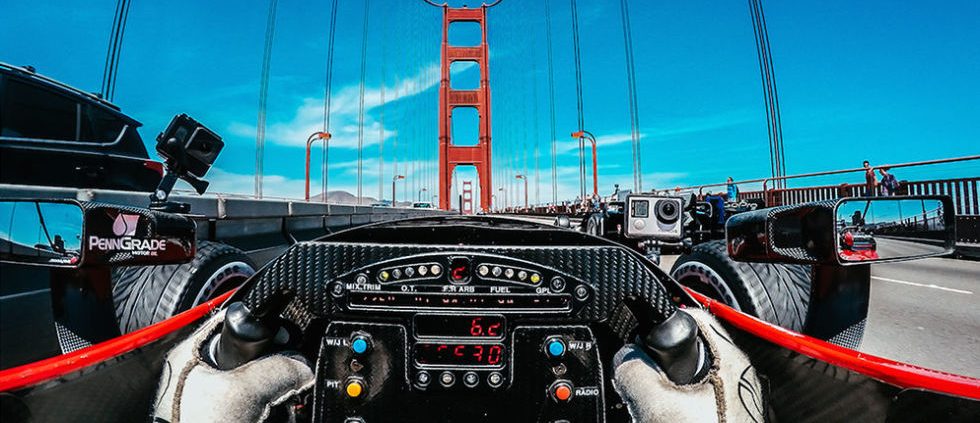Track time is precious, and most of us don’t get enough of it. But there are ways to stay sharp on the street.
The best and worst thing about track driving is how little it resembles what we normally do in cars. Without adrenaline flowing and a lap timer running, even the fastest ‘shoe can become a mindless commuter. “It’s definitely easier to get distracted on the road than in a race car,” admits IndyCar driver Graham Rahal. But all that seat time to and from work needn’t go to waste. Here are skills to focus on between checkered flags.
Braking: “Really, the most important driving skill is brake application,” says Skip Barber instructor Divina Galica, a former sports-car and F1 driver. Most drivers brake backward, easing onto the pedal and gradually adding pressure. Instead, get onto the brakes quickly and firmly, reducing force as you slow. But do so with sensitivity. “It’s not stomping on the brake and sending up big clouds of tire smoke,” Galica says. If you’re approaching a turn where you don’t need to stop completely, trail off the brakes smoothly to maintain the car’s balance.
Shifting: “One thing I do when I street drive is heel-and-toe shift,” notes Rahal. It’s a level of coordination that’s becoming less necessary as more vehicles (including his paddle-shifted Indy car) automatically match revs on downshifts, but there’s something uniquely satisfying about blipping the throttle yourself and popping perfectly into gear. And it’s a skill you can practice without even starting the car. With the ball of your foot on the brake, rotate your heel to jab the throttle. It’ll feel like a yoga stretch at first but becomes natural over time. (Depending on your car and anatomy, it may be easier to use the outer edge of your shoe to hit the gas.)
Vision: The first thing you’re likely to hear from a track instructor is also the most important advice to heed on the street: “Look well ahead, not over the front of the car,” advises Galica, who learned a good deal about hand-eye coordination in her previous career as an Olympic skier. Keep your eyes where you want to go and your hands will follow. A street corner has an apex, just like a track. Identify it and aim for it—unless there’s a pedestrian standing there. Speaking of which, learn to mind those mirrors and side windows. The cyclist cutting into your lane in a city will be a guy attempting to pass you on track.
Smoothness: It’s all too easy to get into the habit of man-handling a car on the street—squealing the tires, slamming through gears, and sawing at the steering wheel. Aside from making passengers carsick, such roughness will slow you down on track. Practice predictable steering inputs, throttle and brake applications that don’t upset the car, and deliberate shifts.
Speeding: “To be honest with you, I wouldn’t,” cautions Galica. “Drive as if there’s a flock of sheep around every corner.” You may not be that saintly, but the reality is an empty two-lane isn’t the place to learn your limits. Racetracks have runoff, corner workers, and ambulance crews in the expectation that bad stuff happens when cars go fast. Public roads do not. “Save your heroics for a track day,” Galica says.




Leave a Reply
Want to join the discussion?Feel free to contribute!